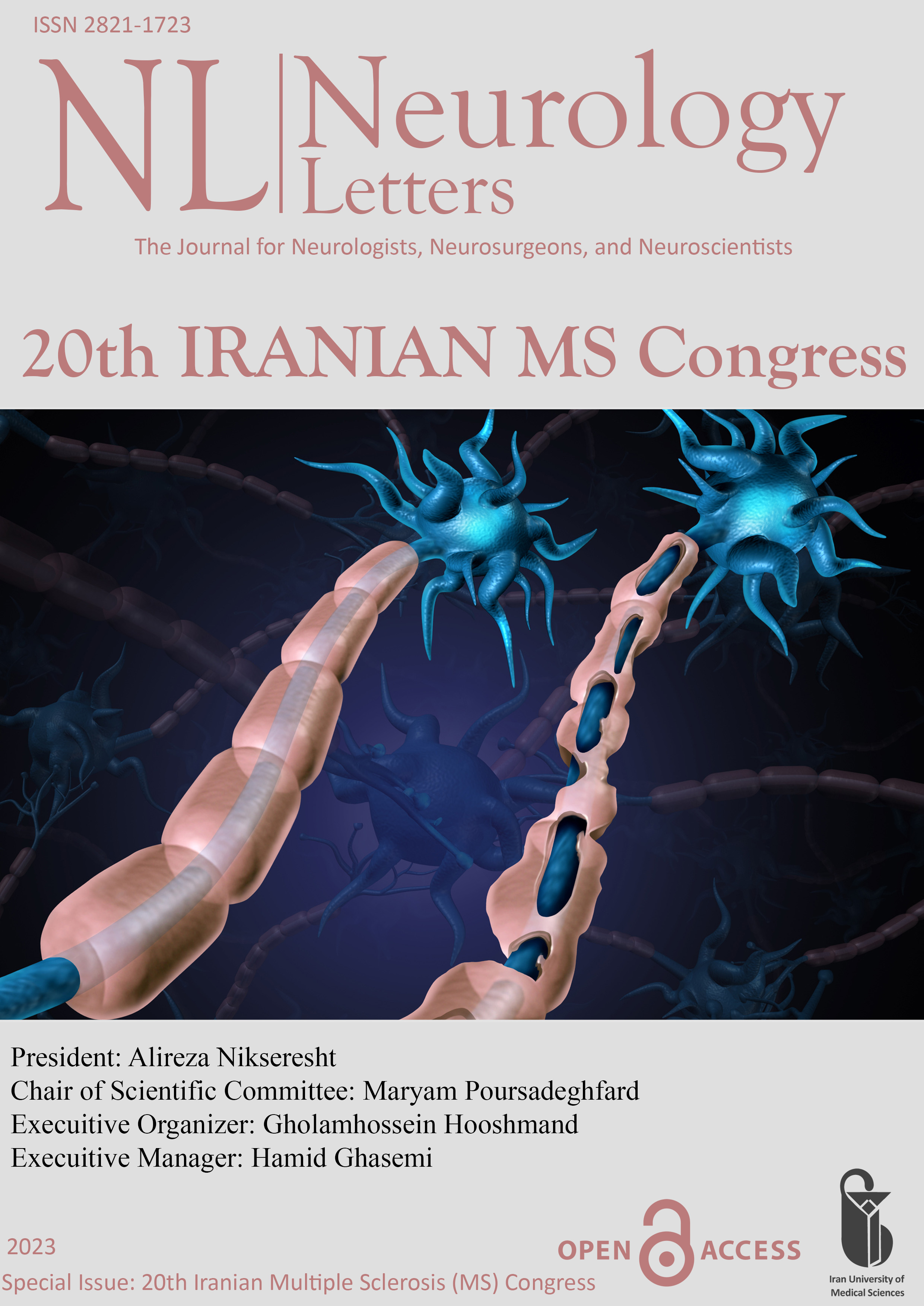Spinal cord MRI in multiple sclerosis; diagnostic, prognostic, and clinical value (ORP-55)
Document Type : Oral Presentation
Author
Isfahan Neurosciences Research Center, Isfahan University of Medical Sciences, Isfahan, Iran
Abstract
Introduction: Multiple sclerosis (MS) is a chronic neurological condition characterized pathologically by axonal loss, demyelination, inflammation, and gliosis. Magnetic resonance imaging (MRI) has had a major impact on diagnosing MS, understanding the condition, and monitoring the effects of treatments. Recently, spinal cord MRI has received increased attention. Advanced techniques have been used to image the spinal cord, particularly the cervical cord, and measure quantitative parameters such as T1 relaxation time, magnetization transfer ratio, and diffusivity. These metrics show central nervous system abnormalities in MS patients and various correlations with disability and might reflect specific pathological processes.
CONVENTIONAL SPINAL CORD MRI:
Lesion detection;
- T2-Weighted Sequences for Spinal Cord Lesion Detection
- Additional MRI Sequences for Spinal Cord Lesion Detection;
Standard T2-weighted FSE sequences with the goal of improving SC lesion detection
Short tau inversion recovery (STIR) is a fat suppression technique
Gradient echo (GRE) sequences are another possible complementary sequence to core T2-weighted, FSE sequences.
Phase-sensitive inversion recovery (PSTI-IR or PSIR), PSIR enabled superior lesion demarcation and localization.
RECOMMENDED STANDARDIZED SPINAL CORD MRI PROTOCOL IN MULTIPLE SCLEROSIS
CLINICAL USEFULNESS OF SPINAL CORD MRI IN MULTIPLE SCLEROSIS: DIAGNOSIS AND PREDICTION
THE CLINICORADIOLOGIC PARADOX
ADVANCED QUANTITATIVE SPINAL CORD MRI TECHNIQUES:
STRUCTURAL TECHNIQUES;
Spinal Cord Atrophy; SC Atrophy: Gray Matter
Magnetization Transfer Imaging
Diffusion Tensor Imaging
Ultra–High-Field MRI
FUNCTIONAL IMAGING;
Functional MRI
Magnetic Resonance Spectroscopy
Conclusions: Imaging the SC in MS has significant value, both in clinical and investigational settings. Conventional MRI techniques have been used predominately to evaluate SC lesions, and newer sequences have improved the ability to detect SC lesions. Conventional MRI of the SC is routinely used in clinical practice, because it has both diagnostic and prognostic usefulness. A number of advanced quantitative SC MRI measures that assess both the structural and functional integrity of the SC have been evaluated in investigational settings. These techniques include measures of SC atrophy, DTI, MTI, UHF MRI, fMRI, and MR spectroscopy.
Keywords
 Neurology Letters
Neurology Letters
